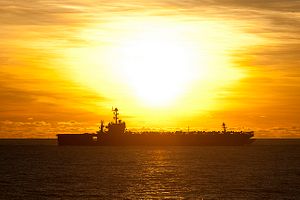In the discussion of China’s intentions on its ocean frontier, little attention is paid to the evolution of the academic underpinnings of its policy, especially in the field of international law. When I was writing my 1998 book, China’s Ocean Frontier: International Law, Military Force, and National Development, there was really only one place to go ─ the State Oceanic Administration of China. That book pointed out that when China participated in the UN Conference on the Law of the Sea from 1973-1982, which resulted in the UN Convention on the Law of the Sea, the country’s international law institutions were virtually non-existent. Most law schools had been closed during the Cultural Revolution that began in 1966 and did not reopen until after 1976.
Since the turn of the century, there has been a growth industry in China for the study of maritime law and policy. For example, the Journal of the Ocean University of China was launched in 2002. This was a product of the Ocean University of China, an institution with a long history after 1959, which has been upgraded several times, most recently in 2002.
There are now also several institutes specializing in the South China Sea. The most visible has been the National Institute for South China Sea Studies, set up as such in 2004, at its predecessor, the Hainan Research Institute of South China Sea, which was founded in 1996. This research center, based in Haikou, has produced a range of studies that are never too far from the government’s lines of policy. For example, its published research and occasional statements by its researchers have vacillated on the meaning of the nine-dashed line in the South China Sea, but most have leaned toward giving it some sort of legal effect. This reflects the unresolved ambivalence in the Chinese government to this line left over from history.
A more interesting organization may be the South China Sea Institute set up in 2012 in the Center for Oceans Law and Policy in Xiamen University.
Xiamen is one of the four original Special Economic Zones announced in 1979, but one which never took off in the same way that Shenzhen did. The main reason for the difference was that Shenzhen was designed to exploit its proximity to Hong Kong’s booming economy, while the Xiamen zone was aimed at exploiting its proximity to Taiwan. Though the latter had a booming economy as well, the evolution of the Xiamen zone remained hostage to the painfully slow development of direct contacts in cross-strait relations in the 1980s and 1990s. In fact, Hong Kong and Shenzhen remained the main transit point for Taiwan commerce into China for most of the time since 1979.
The rapid pick-up of direct links between the Chinese mainland and Taiwan in recent years has seen Xiamen boom. This progress, and its strategic significance, can be captured in an anecdotal way by the emergence in 2005 of the China Oceans Law Review, a typical academic research publication. What makes this law and policy journal special is that it is a collaborative effort between two mainland university centers (the Xiamen University Center for Oceans Policy and Law, and the Shanghai Jiao Tong University Center for Oceans Law and Policy), and centers from Taiwan (Sun Yat-sen University Institute of Marine Affairs), Hong Kong (the Polytechnic University C. Y. Tung International Center for Maritime Studies), and Macau (University of Macau Institute for Advanced Legal Studies). The journal is bi-lingual and is published in Hong Kong. A selection of 60 papers can be viewed here.
As might be expected from a more cosmopolitan enterprise, this journal reflects a certain maturing of the academic debate in China on matters of ocean policy and law. Several articles on the South China Sea are worth noting, including one by Shih-Ming Kao and Nathaniel S. Pearre (“Potential Alternatives to the Disputes in the South China Sea: An Analysis”, No.1, 2013, pp.262-290) and one by Zhao Wei (“Resolving Maritime Delimitation Disputes by Agreement: Practices of States Bordering the South China Sea and Their Implications for China”, No.1, 2013, pp.156-181).
In spite of the uncertainty created about possible new clashes in the South China Sea because of activities by claimants in the past five years, the maturing of Chinese views of ocean law is worth further study. A diplomatic source has suggested to the author that a new initiative by Indonesia, the sponsor of the first effective Track 2 process on the South China Sea beginning in 1990, which led to the 2002 Code of Conduct, may be about to bear fruit. One test of this will be the outcome of a Philippine case in the Permanent Court of Arbitration which convened last Friday, July 10, to deliberate the jurisdiction phase of a Philippines’ case against China’s declaration of its rights to the continental shelf in the South China Sea.

































